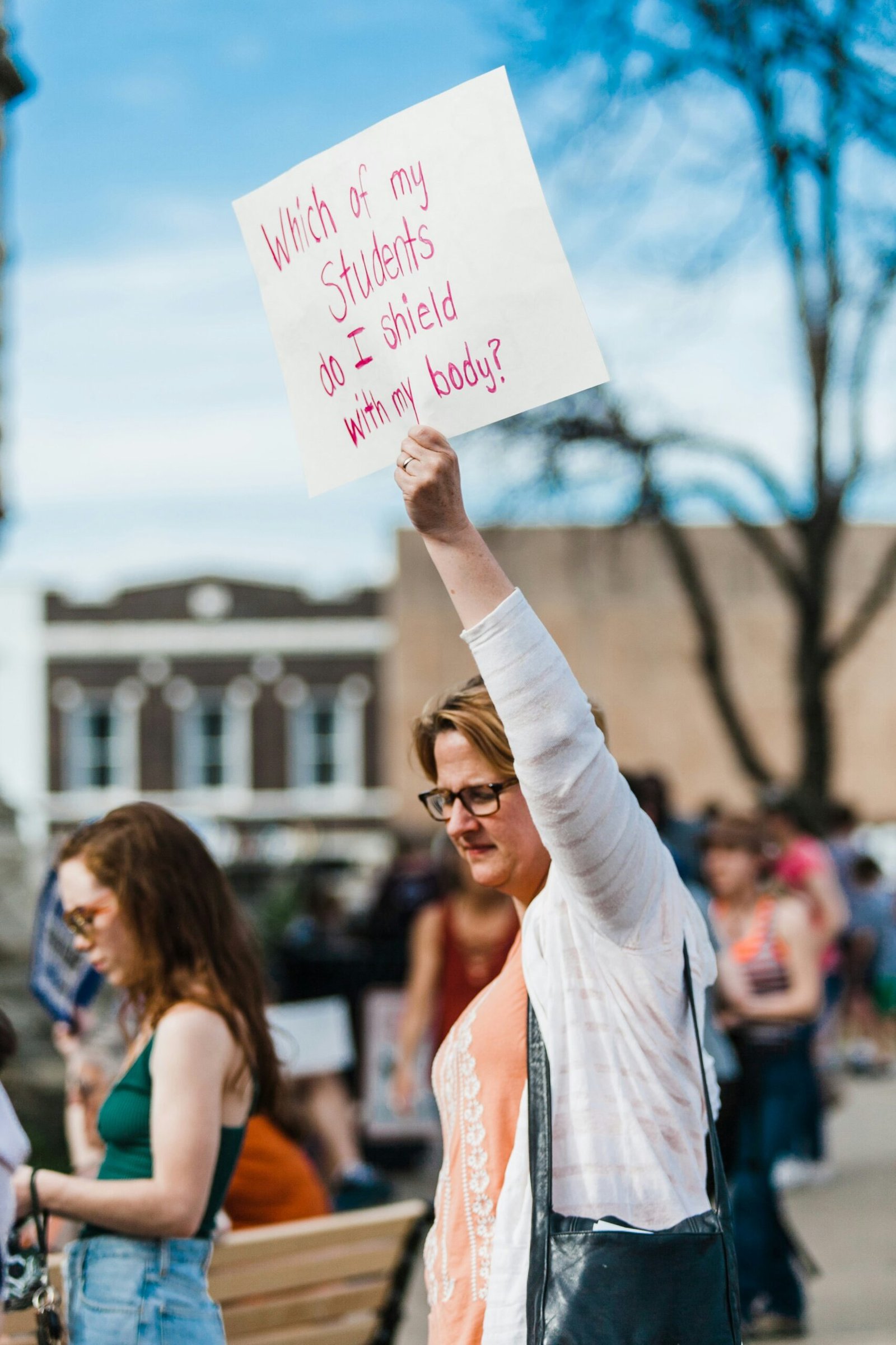Recalling the Sandy Hook Tragedy
The Sandy Hook tragedy, which unfolded on December 14, 2012, marked a profound and heartbreaking moment in history. On that day, a lone gunman entered Sandy Hook Elementary School in Newtown, Connecticut, taking the lives of 20 children and six educators. This horrific event sent shockwaves throughout the local community and reverberated across the nation and around the world, prompting an unprecedented wave of grief and outrage. The loss of innocent lives, especially those of young children, is a tragedy that cannot be understated and has left an indelible mark on the hearts of many.
In the immediate aftermath, the community of Newtown united in shared mourning, as residents and families struggled to comprehend the scale of the tragedy. Vigils were held, where thousands gathered to honor the victims and support one another through collective grief. Schools, local organizations, and faith-based groups came together, creating a network of support to aid those affected by this senseless violence. The impact of the tragedy reached beyond Newtown, sparking a national conversation about gun violence, mental health, and school safety that continues to this day.
Internationally, the Sandy Hook tragedy elicited empathy and support, with many global leaders expressing condolences and solidarity. Various movements emerged, advocating for stricter gun control measures and raising awareness about the importance of community safety and mental well-being. The event served as a stark reminder of the fragility of life and the profound consequences of violence, making it imperative for society to take a stand against such acts and to honor the memory of those lost by working towards a future free from similar tragedies.
The Passage of Time and Ongoing Remembrance
As the years advance since the Sandy Hook tragedy, the commitment to remember and honor the victims remains unwavering within the community and beyond. Each passing year, various memorial events and tributes are organized, serving not only as a means to commemorate those who lost their lives but also as occasions for collective reflection and solidarity. These annual gatherings play a crucial role in sustaining the memory of the victims and fostering a community ethos grounded in remembrance and respect.
One significant aspect of these remembrances is the ritual of community engagement that reflects the collective grief borne by families, friends, and neighbors. Memorials, vigils, and dedicated days of remembrance not only serve to honor the lives of the victims but also facilitate discussions surrounding childhood safety, mental health, and gun violence prevention. These crucial conversations aim to create awareness and advocate for significant policy reforms, which are essential for ensuring that the tragedy of Sandy Hook is neither forgotten nor repeated. By linking personal stories with broader societal issues, the community is able to focus on constructive dialogue and action.
Moreover, educational initiatives have emerged from these memorial aspects, allowing younger generations to learn about the significance of empathy and the importance of standing together in the face of adversity. Through schools and local organizations, programs encouraging students to participate in remembrance activities have gained traction, promoting the ideals of peace and vigilance against violence in schools. Each event remains a poignant reminder of the need for continued advocacy, allowing the legacy of those lost to resonate beyond the tragedy itself.
Advocating for Gun Control and Safety
In the aftermath of the Sandy Hook tragedy, a surge of advocacy efforts focused on gun control and safety emerged across the United States. The shocking events that unfolded on December 14, 2012, galvanized citizens, activists, and organizations to push for more stringent gun laws. This collective response reflects a steadfast commitment to ensuring that such a tragedy does not recur. Various movements and organizations have subsequently formed to amplify this message, promoting stricter regulations on firearm ownership and usage.
One prominent organization is Everytown for Gun Safety, which advocates for responsible gun ownership and a comprehensive approach to gun control. With an extensive network of supporters and volunteers, Everytown not only focuses on legislative reform but also prioritizes education and community engagement. Their work has led to increased public awareness regarding the implications of gun violence and the importance of advancing gun safety measures.
Another notable initiative is the March for Our Lives movement, founded by students in the wake of the Parkland shooting, which drew inspiration from the Sandy Hook tragedy. This movement, spearheaded by young advocates, emphasizes a unified stance against gun violence. Through organized marches, online campaigns, and community engagement strategies, they have successfully highlighted the urgent need for reforms in gun legislation.
Moreover, these advocacy efforts have had tangible effects on policy discussions at both local and national levels. Several states have enacted laws aimed at enhancing background checks, regulating assault weapons, and promoting red flag laws—legislation that enables the temporary removal of firearms from individuals deemed a threat to themselves or others. Through these persistent initiatives, advocates continue to champion gun control and safety, ensuring that the voices of those affected by gun violence are heard and that meaningful change is pursued.
Mental Health Resources and Community Safety Initiatives
The tragic events at Sandy Hook highlighted the urgent need for effective mental health resources and robust community safety initiatives. In the wake of such violence, it is imperative to establish accessible mental health services that can support not just the direct victims but also their families and communities. Mental health professionals play a critical role in helping individuals process grief, trauma, and anxiety, which are common responses to violent incidents. By providing counseling, specialized therapies, and support groups, these services foster resilience and recovery in affected populations.
Moreover, community engagement programs serve as vital platforms for promoting mental well-being and safety. Initiatives such as community forums, workshops, and peer support networks encourage individuals to come together, share their experiences, and learn from one another. These collaborative approaches empower communities to develop their own safety strategies, enhancing their collective capacity to prevent future violence. Additionally, education on mental health issues helps destigmatize seeking help, encouraging individuals to access available resources when needed.
To further enhance community safety, there is a push for comprehensive measures that prioritize the mental health and security of individuals. This can include implementing school-based mental health programs, conducting threat assessment trainings, and improving communication between law enforcement and mental health services. By integrating these sectors, communities can better identify and address potential threats before they escalate, while also ensuring that individuals who may be struggling with mental health issues receive the assistance they require.
Ultimately, the commitment to mental health resources and community safety initiatives plays a crucial role in healing communities affected by violence. Through continuous advocacy and engagement, stakeholders can build a more secure and supportive environment for families, fostering resilience as we honor the victims of tragedies like Sandy Hook.
Established Organizations and Memorials
The memory of the victims of the Sandy Hook tragedy has led to the creation of various organizations and memorials dedicated to advocating for gun control and fostering awareness about violence prevention. One of the most significant organizations is the Sandy Hook Promise, which was founded by several family members of the victims. This nonprofit aims to prevent violence in schools and communities through educational programs and legislative advocacy. Their initiatives focus on transforming the tragedy into a proactive approach to safety by implementing measures that empower individuals to recognize and respond to potentially harmful behavior.
In addition to Sandy Hook Promise, the Sandy Hook Memorial is a poignant tribute to the lives lost on that fateful day. Located in Newtown, Connecticut, the memorial provides a serene environment for reflection and remembrance. Visitors can honor the memory of the victims while also considering broader issues such as mental health awareness and community support, which are vital in reducing the potential for future tragedies.
Furthermore, the impact of the Sandy Hook tragedy reached legislative levels, prompting discussions around stricter gun control laws in several states. The call for reform not only honors the victims but also aims to create a safer society for future generations. Various states have since enacted legislation to enhance background checks and limit access to firearms, demonstrating a shift towards prioritizing public safety over unrestricted access to guns.
Collectively, these organizations and memorials form a crucial part of the ongoing dialogue surrounding gun violence prevention. By serving as both tributes and catalysts for change, they ensure that the memory of the Sandy Hook victims continues to influence positive action and foster a culture aimed at preventing future acts of violence. These initiatives represent a commitment to honoring those we have lost by striving for a safer, more aware society.
Community and National Resilience
The Sandy Hook tragedy stands as a harrowing reminder of the profound impact that violence can have on communities and the nation as a whole. Yet, in the face of such adversity, communities across the United States have consistently demonstrated remarkable resilience. Following the events of Sandy Hook, individuals, families, and neighborhoods united in a shared commitment to healing and support, illuminating the strength found in solidarity during periods of unimaginable grief.
Communities have taken various initiatives to foster healing and remembrance, such as organizing vigils, establishing memorials, and creating scholarship programs in memory of the victims. These efforts have not only honored the lives lost but also served as platforms for communal coping and dialogue. The shared experience of loss has forged bonds between individuals, allowing them to provide emotional support to one another and reminding them that they are not alone in their struggles.
Nationally, the tragedy at Sandy Hook has galvanized movements advocating for gun control and mental health awareness. The collective action taken by concerned citizens has renewed calls for policymakers to address underlying issues contributing to violence in society. Advocacy groups, formed by families and survivors, have emphasized that lasting change is possible when individuals unite behind common goals. Their endeavors illustrate how tragedies, while deeply painful, can catalyze significant conversations about the need for legislative reforms and systemic shifts to promote a safer society.
Moreover, the resilience demonstrated in the wake of tragedy underscores the importance of community engagement. By actively participating in discussions surrounding safety and reform, individuals have the ability to influence change at local and national levels. This collective engagement highlights the vital role of citizen advocacy in fostering a united front against the challenge posed by violence. Through shared purpose and dedication, communities can navigate the complexities of grief while simultaneously working toward a more peaceful and harmonious future.
Ongoing Dialogue on Violence and Safety
The continuous discussion surrounding societal violence and safety is paramount in fostering a culture of awareness and responsibility. By engaging in open dialogues, communities can develop a nuanced understanding of the factors contributing to gun violence and the implications for public safety. These conversations are not merely academic; they serve as a catalyst for community-driven initiatives aimed at prevention and education. Engaging various stakeholders, including policymakers, educators, mental health professionals, and activists, is essential in creating a comprehensive approach to safety.
Additionally, dialogues about violence should not remain confined to local communities; rather, they must extend to national platforms. Public forums, workshops, and advocacy groups play a significant role in addressing the complexities of gun violence and the urgent need for effective safety measures. These discussions can highlight successful intervention strategies and best practices that have emerged in various contexts, paving the way for collaborative efforts across states and communities.
Furthermore, moral responsibility lies with every member of society to protect one another. This extends beyond mere legislation; it involves a commitment to fostering environments where individuals feel safe and supported. By nurturing a collective consciousness regarding the implications of violence, communities can cultivate resilience and promote constructive discourse. Schools, workplaces, and social spaces should then serve as platforms for education on conflict resolution, emotional intelligence, and responsible gun ownership, instilling values that deter violent behaviors.
In essence, ongoing dialogue on violence and safety is not simply a reaction to tragic events; it is a proactive approach that encourages awareness, understanding, and moral accountability. Through sustained conversations, society can work towards not only honoring the memories of victims but also enacting meaningful change that ensures their legacies contribute to safer futures. By committing to this dialogue, we are laying the groundwork necessary for effective prevention and advocacy against the scourge of violence.
Challenges and Controversies in Advocacy
The pursuit of effective advocacy for gun control and community safety following the Sandy Hook tragedy has encountered significant challenges and controversies. Advocates for stricter gun laws face political resistance from various factions, particularly within legislative bodies where Second Amendment rights are staunchly defended. Efforts to initiate policy changes often meet formidable opposition from gun rights organizations, which argue for individual liberties and the necessity of firearms for personal safety. This deeply entrenched political landscape poses substantial obstacles for those striving for reform.
Social resistance plays a pivotal role in shaping public responses to gun violence advocacy. Many community members hold diverse opinions on how best to address the pressing issue of gun violence. While some endorse a more stringent approach to gun control, others advocate for alternative solutions, such as enhanced mental health services or community policing initiatives. This divergence of thought creates a complex environment where advocates must navigate varying perspectives to foster productive dialogue. The existence of misinformation and polarized narratives surrounding gun control further complicates efforts to achieve consensus and forge a path forward.
The emotional weight of the Sandy Hook tragedy echoes in the hearts of many, which influences public sentiment and advocacy strategies. Some individuals might view the push for gun control as an affront to their liberties or a political maneuver rather than a necessary intervention to prevent future tragedies. This perception can amplify tensions and lead to pronounced divides within communities, making it challenging to construct a united front in the fight against gun violence. Successfully engaging these stakeholders requires a nuanced understanding of their concerns and the ability to communicate effectively the necessity of advocacy efforts for public safety. Ultimately, these challenges demand persistent effort and strategic approaches to bridge the gaps in dialogue and policy reform.
A Call to Action: Unity and Compassion for a Safer Future
The tragedy at Sandy Hook Elementary School serves as a somber reminder of the profound losses experienced and the urgent necessity for collective action. In remembering the victims, it becomes imperative that we, as a society, unite under the banner of compassion and understanding. Advocating for a safer future is not solely the responsibility of policymakers and leaders; it is a shared commitment that each individual must embrace. By demonstrating empathy and solidarity, we contribute to a culture that prioritizes the well-being of all community members.
Unity in purpose can bring about significant change. Engaging in meaningful conversations regarding gun control, mental health, and responsible community practices is vital. Awareness of these issues can bridge differences and foster collaborative efforts among diverse groups. It is through understanding various perspectives that we can develop effective strategies to prevent future tragedies. Communities should encourage open dialogues, share their stories, and advocate for policies that reflect the values of safety and compassion.
Support for initiatives dedicated to honoring Sandy Hook victims is equally crucial. Whether through volunteering, participating in remembrance events, or donating to organizations that focus on advocacy and education, each action contributes to a larger movement for positive change. By supporting these causes, we demonstrate a commitment to ensuring that such incidents do not recur. Collectively, we can create environments that prioritize safety and advocate for health and wellness across our communities.
Ultimately, fostering a safer future relies on our determination to stand together and promote compassion as a fundamental value. As we remember the victims of Sandy Hook, let us recommit ourselves to advocating for unity, understanding, and proactive engagement in our communities. Together, we can honor their memory by creating a society where every individual feels valued and protected.
















